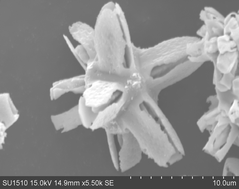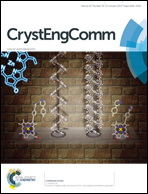An innovative glycine complexing approach to silver phosphate myriapods with improved photocatalytic activity†
Abstract
Without using any templates, surface-etched Ag3PO4 myriapods were synthesized by a simple glycine complexing method. The unique surface structure endows Ag3PO4 with a high specific surface area, thus leading to greatly improved photocatalytic degradation activity for Rhodamine B compared to that for the solid structures. The glycine complexing strategy is expected to be extended to the preparation of other photocatalysts.


 Please wait while we load your content...
Please wait while we load your content...